Key Takeaways
- The term “superfood” is mostly a marketing gimmick designed to trick people into eating healthier, but some foods do have unique health benefits that set them apart from the rest.
- The main “superfoods” you want to include in your diet are fish, garlic, blueberry, cranberry, oats, cruciferous vegetables, dark chocolate, and black seed.
- Keep reading to learn what makes these foods “super,” how much of each you should eat for maximum health benefits, how to include them in your diet, and more.
Imagine if eating a handful of special foods every day could maximize your brainpower, metabolism, energy levels, immunity, physical performance, muscle building, libido, skin, hair, and nail health.
Keep imagining it—because that’s as real as it’ll ever get.
There are no individual foods that can single-handedly transform your health and wellbeing.
Only a lifestyle can do that—one that revolves around eating nutritious foods, exercising, maintaining good sleep hygiene, and balancing stress and relaxation.
Food and supplement marketers won’t let a pesky fact like that thwart their designs on our paychecks, though, and so we have the “superfood” phenomenon.
You’re struggling with acne, you say?
You don’t need to work out and stop eating all those sugary treats you love.
Vapid male celebrity #2343 says eat some avocado, salmon, turmeric, and blueberries, and you’ll have photoshop-perfect abs just like his (which are totally not photoshopped).
You want to lose more fat while you’re at it? Forget counting calories.
Apples, almonds, olive oil, grapefruit, and oatmeal are the ticket, especially if you mix them in this overpriced blender.
Feeling down and dull? It can’t be the hours of social media, YouTube, Netflix, and porn every day.
Indulge in some beets, grass-fed beef, eggs, and walnuts, and your mood and IQ will totally soar.
I think you get the point: Marketers coined the term “superfood” to sell stuff, and it has worked remarkably well. Spinach, quinoa, kale, berries, and tea are in their heyday. And while the superfood white lie has encouraged many people to eat somewhat better, it has also confused many about how their body works and how to make it work better.
Read: If You Think “Clean Eating” Is Stupid, You’re Doing It Wrong
Why is this article about “superfoods” and “supercharging” your body then?
Because while you should be skeptical about the exaggerated claims surrounding specific foods, certain ones added to an otherwise nutritious diet can further improve your health, performance, wellness, and longevity.
It would be disingenuous to call them “superfoods,” but they are a cut above your average “healthy” fare, and if you’re looking to squeeze more high-quality living out of your body, you should eat them.
Let’s call them “functional foods” instead, because that sounds more reasonable and accurate, and here they are:
- Fish
- Garlic
- Blueberry
- Cranberry
- Oatmeal
- Cruciferous vegetables
- Spinach
- Dark chocolate
- Black seed
Let’s learn about each.
Fish

Seafood is a great source of protein as well as various vitamins and minerals, such as magnesium, phosphorus, selenium, and vitamins A and D. It’s also one of the few foods that provides vital omega-3 fatty acids, which are sorely lacking from many people’s diets.
Read: This Is the Definitive Guide to Fish Oil Supplementation
You can increase your intake of omega-3 fatty acids either with supplementation or by eating more fatty fish.
When purchasing fish, your first consideration should be mercury content. The Natural Resources Defense Council offers the following guidelines for minimizing fish-based mercury in your diet.

Besides choosing your fish based on mercury content, you’ll see different fish being advertised as “wild-caught” or “farm-raised.” Though wild-caught sounds like the healthier option, the science is ambiguous. In terms of nutritional profiles and contaminant levels, few significant differences exist between wild-caught and farm-raised fish.
Regardless of which fish you choose and how it was caught or raised, keep the following guidelines in mind:
- Purchase from a reputable supplier. A highly regarded local fish market is likely to offer better-quality products than a large-chain grocery store.
- Give the fish the smell test. Fresh, unfrozen fish should smell of seawater or cucumber. Avoid fish that gives off a strong, unpleasant odor.
- Look for fish with elastic flesh. If possible, press a finger into the fish. The flesh of fresh fish will bounce back. If the indentation remains, the fish is past its prime.
- Look for liquid on the meat. Milky liquid present on a fish fillet is often a sign of rot.
- Examine the quality of the skin. When purchasing fillets with the skin intact, scales should be smooth and shiny. Ruffled scales or a dull appearance are signs of age.
If purchasing fresh fish isn’t an option for you, frozen fish, whether bought locally or from an online retailer, may be a viable alternative.
- Look for “frozen-at-sea” (FAS) designations. These fish are flash-frozen as soon as three seconds after being brought onboard the ship, giving them a superior flavor and quality over longer-processed fish.
- Watch out for freezer-burn. White, dehydrated spots or visible ice crystals indicate moisture loss, usually as a result of thawing and refreezing.
- Look for moisture-proof, vapor-proof packaging. Fish packaged this way fare better than over-wrapped ones.
If you’re not taking an omega-3 supplement, try to have fish high in omega-3s, like salmon or mackerel, at least once per week.
Garlic
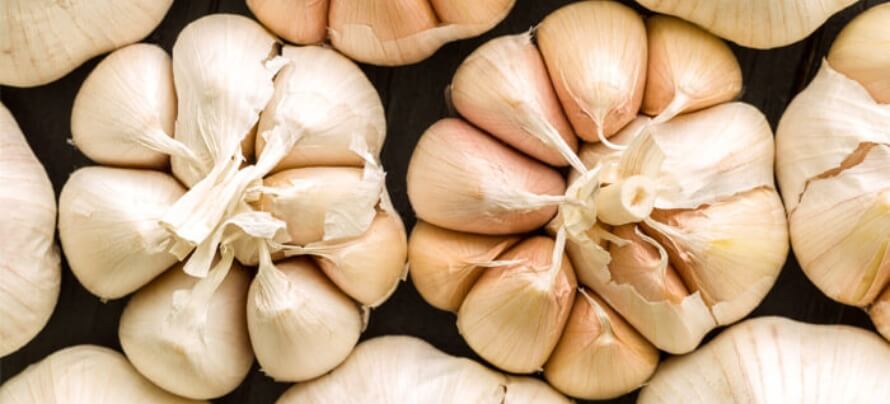
Garlic has a long and illustrious history in traditional medicine for treating everything from blood disorders to infections to aging. It’s even thought to be the first dietary performance enhancer.
Garlic gets its mojo from its abundance of sulfur, which helps the body produce hydrogen sulfide (H2S). H2S is a gas-like substance that relaxes blood vessels, improving blood flow, and activates a protein that signals cells to absorb and burn energy known as AMPK.
Over time, however, garlic fell out of medicinal use, because it’s a handyman of sorts that can do many mild things in the body, as opposed to a specialist with fewer significant effects.
Modern medicine thrives on specialization and specificity, not generalization, and so prefers treatments that do one thing very well, like metformin for glucose control and warfarin for blood thinning.
Read: 13 Studies Answer: What’s the Best Way to Lower Blood Sugar?
Garlic’s still an outstanding functional food, though, and most studies showing benefits used aged garlic extract at around 600 to 1,200 milligrams. This is the equivalent of about one to three garlic cloves per day, depending on their size.
Ideally, you’d eat garlic raw, as heat destroys the enzyme that helps create the bioactive compounds that give garlic most of its special properties. For instance, research shows sixty seconds in the microwave, forty-five minutes in the oven, or fifteen minutes in boiling water can eliminate this enzyme.
That said, heating garlic doesn’t render it worthless, but it relegates it to the level of a more basic antioxidant, like blueberry or cranberry, as opposed to a source of uniquely beneficial molecules.
If the thought of putting down a clove or three of raw garlic every day turns your stomach, you have another option: Crush, chop, or mince it, and then let it sit at room temperature for at least ten minutes before cooking. This releases an enzyme in garlic known as alliinase that boosts the creation of health-promoting sulphur compounds and helps protect them from being damaged by heat.
I incorporate garlic into more or less every dinner I make. Typically, I’ll chop it up, let it sit for ten or fifteen minutes while I cook up a stir fry or veggie casserole or heat up a soup, chili, or stew, and add the garlic last, when the dish is ready. This way, the garlic is mostly raw when I eat it.
Crushed garlic is also a tasty topping for oven-baked fish and chicken (cover it with aluminum foil if it starts to turn brown while cooking, because it can taste funky if overcooked).
Blueberry
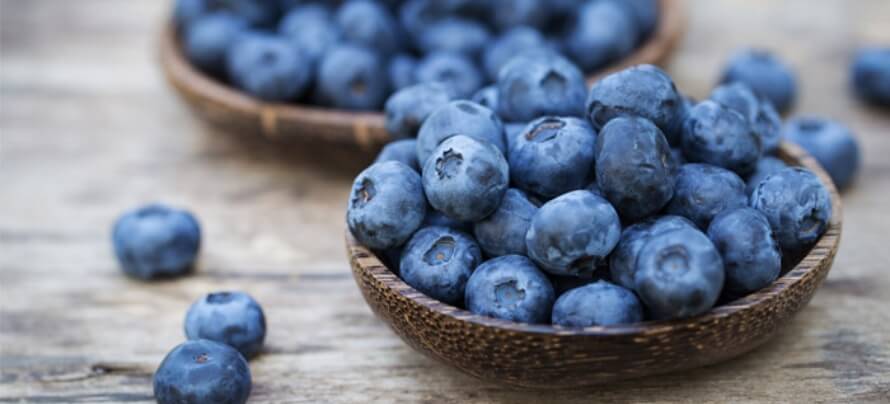
Blueberries (and all dark, blue-black berries) are a superior fruit because of their anthocyanin content, which is a powerful antioxidant linked to improved memory, mood, and immunity, as well as less DNA damage, which helps protect against various types of disease and dysfunction.
The dose required to produce benefits isn’t small, but it’s still workable—60 to 120 grams of fresh blueberries, or about ½ to 1 cup per day. The highest doses used in studies are around 250 grams, which would be a chore to eat but easily turned into a juice.
You can also opt for frozen blueberries, and aim for about 175 grams per day. The process of freeze-drying causes minor losses in antioxidant capacity, but this isn’t a cause for concern, because antioxidant levels rise in berries after they’re frozen.
If you’re buying a premade blueberry juice, make sure it’s not just blueberry-flavored, but made with blueberries. The first ingredient should be blueberry.
I typically eat blueberries fresh and raw. They’re especially good when mixed with oatmeal, and make a nice addition to salads as well.
Cranberry
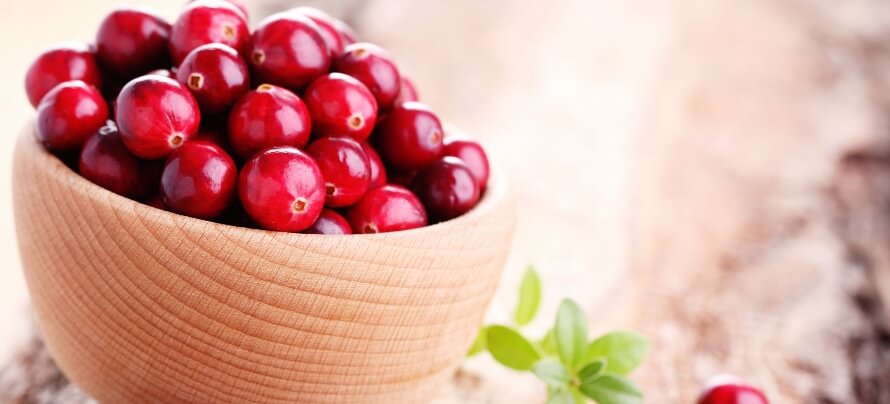
Cranberries have been associated with improved urinary health for years now, and recently, high–quality evidence has emerged to support this.
How cranberry accomplishes this is neat, too—rather than killing the bacteria that cause urinary tract infections, it prevents them from adhering to the urinary tract.
Moreover, results have been seen with as little as 500 milligrams of cranberry fruit powder, which is just dehydrated cranberries stuffed into capsules. In another study conducted at University Hospital, scientists found that a dose of just 1.5 grams of dried cranberries was effective. Even cranberry juice has been shown to work.
Like most berries, cranberries have a high water content, so an effective dose of fresh cranberries would be about 11 grams (a small handful).
Oats
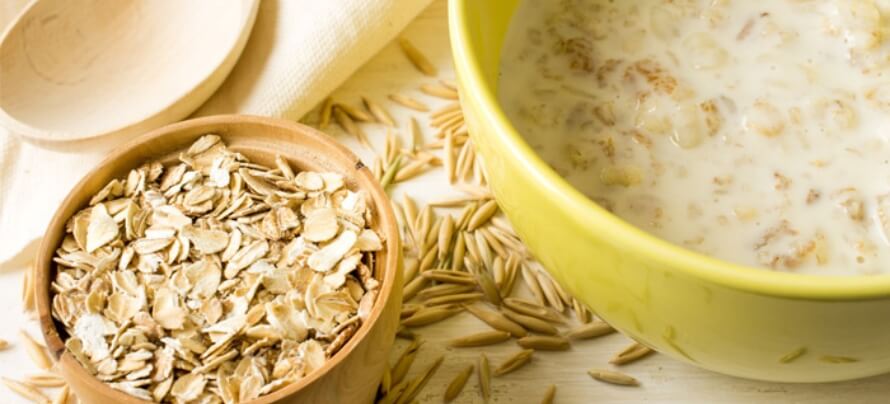
Despite what the Paleo folk would have you believe, we humans have been enjoying oats for a very long time. For instance, a 2015 study conducted by scientists at the University of Florence found our ancient ancestors were eating oats 33,000 years ago.
There are good reasons this grain has stood the test of time, too.
It grows easily in many different environments and stores well, has a mild, pleasant taste that goes well with many other foods, and it’s an excellent source of several minerals, including magnesium, potassium, and phosphorus, as well as beta-glucan, a soluble fiber linked to improving cholesterol and blood glucose levels and boosting heart health.
Oats are cheap, too. At about 10 to 15 cents per serving, they’re hard to beat in overall value.
A common slur on oats, however, is they contain phytates, which makes them unhealthy to eat. Phytate is a compound found in plant foods that hinders absorption of minerals, but using that fact to attack oats is silly.
First, oats aren’t uniquely high in phytates. In fact, they have about the same amount as similar grains like barley and rye, and much less than legumes like kidney beans, peanuts, walnuts, almonds, and cashews.
Second, although phytates in oats block some mineral absorption, it’s not enough to lead to mineral deficiencies or health problems. Moreover, oatmeal is rich enough in minerals that its phytates only knock it down a rung from exceptional to average in this regard.
Ironically, phytates aren’t all bad, either. Research shows they have positive effects on calcification and kidney stone formation, digestion, blood glucose and lipid levels, as well as anticancer effects.
I eat oats in the form of oatmeal when I’m lean bulking (and particularly like baked oatmeal dishes), but occasionally I’ll work them into my meal plan when cutting or maintaining, too.
You can also replace some of the flour in many baked goods with oats to sneak more into your diet (it often boosts the moisture content, increasing chewiness, and gives the food a pleasant malty taste).
Cruciferous Vegetables

Cruciferous vegetables include cauliflower, cabbage, kale, garden cress, bok choy, broccoli, Brussels sprouts, and similar green leaf vegetables. They’re called “cruciferous,” because they’re a part of the Brassicaceae family, which was formerly called Cruciferae.
The primary reason this vegetable family finds itself on many “superfood” lists is because its members contain three molecules known as isothiocyanates:
- Indole-3-carbinol
- Sulforaphane
- PEITC (phenethyl isothiocyanate)
All cruciferous vegetables contain these molecules, but amounts and ratios differ. For example, broccoli sprouts have the highest ratio of sulforaphane, whereas mature broccoli and watercress are rich in PEITC.
Unlike other antioxidants, isothiocyanates don’t combat reactive oxygen species, but stimulate the production of three powerful antioxidant enzymes: glutathione, catalase, and superoxide dismutase.
The primary benefit associated with eating cruciferous vegetables is a lower risk of cancer, and colon cancer in particular.
Many people also claim they have anti-estrogen effects because of their indole-3-carbinol content, which turns into a molecule called diindolylmethane (DIM) in the body. While it’s true these substances interact with estrogen molecules to make them less potent, the effects are too mild to appreciably impact body composition.
Although I don’t know of any studies on the optimal amount of cruciferous vegetables to include in our diet, one serving per day is a reasonable recommendation to positively impact our health and wellbeing.
I eat cruciferous veggies every day at dinner, typically in a stir fry, soup, chili, stew, or casserole, and sometimes have them alongside fish or meat (steamed broccoli with a squirt of lemon juice is a go-to).
Dark Chocolate
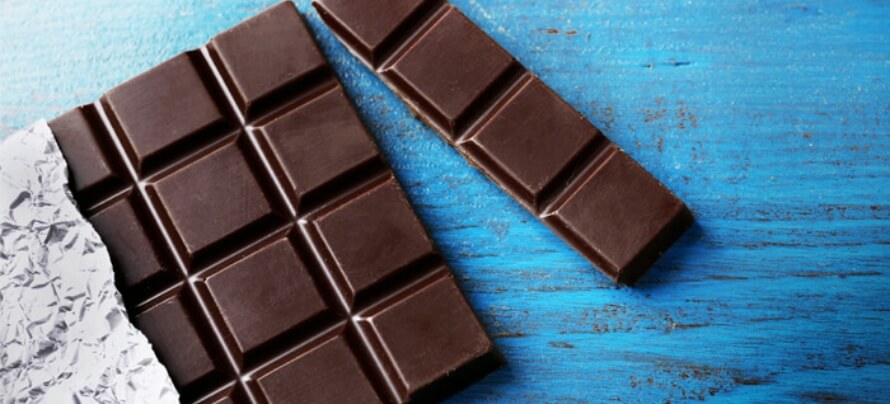
Yes, I’m telling you to eat chocolate, and I have science on my side!
Dark chocolate derives most of its health benefits from molecules called catechins, which are antioxidants also abundant in green and white tea.
These molecules have several effects in the body, including improved blood flow, photoprotection, and oxygenation of the brain (in youth, at least).
Fortunately for your meal plan, too, you only need a little dark chocolate to profit—research shows just 20 to 50 grams (about 110 to 270 calories) of 70 percent (or higher) dark chocolate per day is enough.
(Oh, and if you feel confused about how many calories, how much of each macronutrient, and which foods you should eat to reach your goals, take the Legion Diet Quiz to learn exactly what diet is right for you.)
One thing to be mindful of with dark chocolate, though, is its caffeine content. One square of 60 percent (or higher) dark chocolate (~13 grams) has about 15 milligrams of caffeine, which can interfere with your sleep if you eat too much too close to your bedtime.
Black Seed
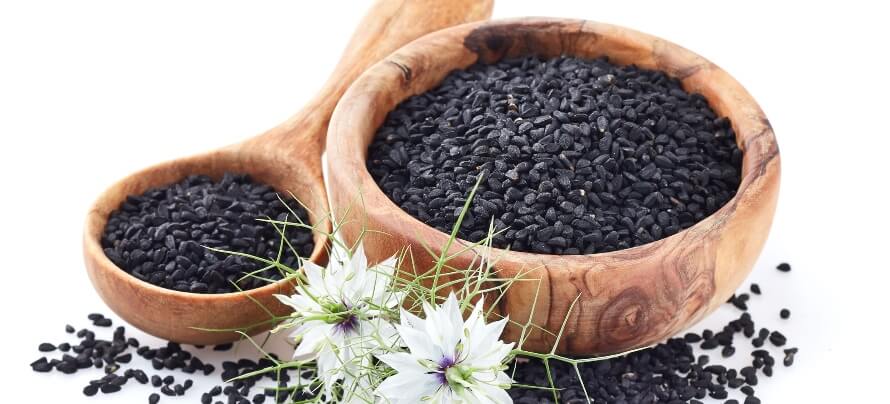
Black seed (also known as Nigella sativa) is a plant whose seeds have been used as a spice and medicine for over 2,000 years. The popular supplement black seed oil comes from this plant.
It stands out among other cumins and seeds because of its thymoquinone content, which is a molecule associated with many favorable effects in the body, including hepatoprotective, anti-inflammatory, antioxidant, and anti-cancer properties.
Black seeds are also tasty, with a flavor similar to black pepper (great for stir fry recipes), and you don’t need to eat much to reap rewards, either. One study conducted by scientists at Sam Ratulangi University School of Medicine found just 3 grams of seeds produced mild benefits on many parameters, including an increase in overall mood. And if you want to reach a higher effective dose, double that to about 6 grams.
I like to include 3 to 6 grams of black seeds as seasoning in a stir fry, soup, chili, stew, or casserole. Sometimes, if a recipe calls for black pepper, I’ll reduce or remove it if I’m adding black seeds to avoid too much of that flavor.
#
That’s it for my list of notable foods you should consider incorporating into your diet.
If you don’t like most or any of the foods covered in this article, you don’t have to eat any of them to be healthy, but if you want to optimize your physiology, I challenge you to expand your gustatory horizons. It’s easy to do, too.
First, by eating a food repeatedly, you’re more likely to develop a liking for it. Research with children, for example, shows it can take up to fifteen exposures to a new food before they adjust to it.
Second, you can cultivate a taste for foods you don’t like by combining them with ones you enjoy. For instance, if you struggle to eat cruciferous vegetables but love cheese, combine them! Then, as you get used to eating the vegetables that way, you can reduce the amount of cheese until it’s no longer needed.
Third, recipes are another fantastic tool for learning to enjoy foods. By sprucing up the offending grub with a recipe, you can turn it into a tasty dish you’ll be happy to come back to again and again.
Fourth, the right perspective helps with adjusting your palate. If you view food primarily as a source of flavor, comfort, and pleasure, it’s much harder to eat a lot of what’s good for you versus what makes you feel good.
If, however, you consider it mainly a supply of nutrition and sustenance—“fuel,” as some people like to say—you’ll develop an inclination toward nutritious foods and an aversion to overindulging in junk calories.
***
This article is from the second edition of my bestselling fitness book for experienced weightlifters, Beyond Bigger Leaner Stronger, which is now live everywhere you can buy books online. Click here to learn more.
What’s your take on these superfoods? Have anything else to share? Let me know in the comments below!
Scientific References +
- Maier, A., Chabanet, C., Schaal, B., Issanchou, S., & Leathwood, P. (2007). Effects of repeated exposure on acceptance of initially disliked vegetables in 7-month old infants. Food Quality and Preference, 18(8), 1023–1032. https://doi.org/10.1016/j.foodqual.2007.04.005
- Qidwai, W., Hamza, H. Bin, Qureshi, R., & Gilani, A. (2009). Effectiveness, safety, and tolerability of powdered Nigella sativa (kalonji) seed in capsules on serum lipid levels, blood sugar, blood pressure, and body weight in adults: results of a randomized, double-blind controlled trial. Journal of Alternative and Complementary Medicine (New York, N.Y.), 15(6), 639–644. https://doi.org/10.1089/acm.2008.0367
- Khader, M., & Eckl, P. M. (2014). Thymoquinone: An emerging natural drug with a wide range of medical applications. Iranian Journal of Basic Medical Sciences, 17(12), 950–957. https://doi.org/10.22038/ijbms.2015.3851
- Kuebler, U., Arpagaus, A., Meister, R. E., von Känel, R., Huber, S., Ehlert, U., & Wirtz, P. H. (2016). Dark chocolate attenuates intracellular pro-inflammatory reactivity to acute psychosocial stress in men: A randomized controlled trial. Brain, Behavior, and Immunity, 57, 200–208. https://doi.org/10.1016/j.bbi.2016.04.006
- Taub, P. R., Ramirez-Sanchez, I., Patel, M., Higginbotham, E., Moreno-Ulloa, A., Román-Pintos, L. M., Phillips, P., Perkins, G., Ceballos, G., & Villarreal, F. (2016). Beneficial effects of dark chocolate on exercise capacity in sedentary subjects: Underlying mechanisms. A double blind, randomized, placebo controlled trial. Food and Function, 7(9), 3686–3693. https://doi.org/10.1039/c6fo00611f
- Francis, S. T., Head, K., Morris, P. G., & Macdonald, I. A. (2006). The effect of flavanol-rich cocoa on the fMRI response to a cognitive task in healthy young people. Journal of Cardiovascular Pharmacology, 47(SUPPL. 2). https://doi.org/10.1097/00005344-200606001-00018
- Yoon, H. S., Kim, J. R., Park, G. Y., Kim, J. E., Lee, D. H., Lee, K. W., & Chung, J. H. (2016). Cocoa flavanol supplementation influences skin conditions of photo-aged women: A 24-week double-blind, randomized, controlled trial. Journal of Nutrition, 146(1), 46–50. https://doi.org/10.3945/jn.115.217711
- Ried, K., Frank, O. R., & Stocks, N. P. (2009). Dark chocolate or tomato extract for prehypertension: A randomised controlled trial. BMC Complementary and Alternative Medicine, 9. https://doi.org/10.1186/1472-6882-9-22
- Gottumukkala, R. V. S. S., Nadimpalli, N., Sukala, K., & Subbaraju, G. V. (2014). Determination of Catechin and Epicatechin Content in Chocolates by High-Performance Liquid Chromatography. International Scholarly Research Notices, 2014, 1–5. https://doi.org/10.1155/2014/628196
- Bradlow, H. L., Sepkovic, D. W., Telang, N. T., & Osborne, M. P. (1999). Multifunctional aspects of the action of indole-3-carbinol as an antitumor agent. Annals of the New York Academy of Sciences, 889, 204–213. https://doi.org/10.1111/j.1749-6632.1999.tb08736.x
- Higdon, J. V., Delage, B., Williams, D. E., & Dashwood, R. H. (2007). Cruciferous vegetables and human cancer risk: epidemiologic evidence and mechanistic basis. In Pharmacological Research (Vol. 55, Issue 3, pp. 224–236). Pharmacol Res. https://doi.org/10.1016/j.phrs.2007.01.009
- Navarro, S. L., Li, F., & Lampe, J. W. (2011). Mechanisms of action of isothiocyanates in cancer chemoprevention: An update. In Food and Function (Vol. 2, Issue 10, pp. 579–587). NIH Public Access. https://doi.org/10.1039/c1fo10114e
- Tang, L., Paonessa, J. D., Zhang, Y., Ambrosone, C. B., & McCann, S. E. (2013). Total isothiocyanate yield from raw cruciferous vegetables commonly consumed in the United States. Journal of Functional Foods, 5(4), 1996–2001. https://doi.org/10.1016/j.jff.2013.07.011
- Schlemmer, U., Frølich, W., Prieto, R. M., & Grases, F. (2009). Phytate in foods and significance for humans: Food sources, intake, processing, bioavailability, protective role and analysis. In Molecular Nutrition and Food Research (Vol. 53, Issue SUPPL. 2, pp. S330–S375). Wiley-VCH Verlag. https://doi.org/10.1002/mnfr.200900099
- Gupta, R. K., Gangoliya, S. S., & Singh, N. K. (2013). Reduction of phytic acid and enhancement of bioavailable micronutrients in food grains. In Journal of Food Science and Technology (Vol. 52, Issue 2, pp. 676–684). Springer India. https://doi.org/10.1007/s13197-013-0978-y
- Jayachandran, M., Chen, J., Chung, S. S. M., & Xu, B. (2018). A critical review on the impacts of β-glucans on gut microbiota and human health. In Journal of Nutritional Biochemistry (Vol. 61, pp. 101–110). Elsevier Inc. https://doi.org/10.1016/j.jnutbio.2018.06.010
- Lippi, M. M., Foggi, B., Aranguren, B., Ronchitelli, A., & Revedin, A. (2015). Multistep food plant processing at Grotta Paglicci (Southern Italy) around 32,600 cal B.P. Proceedings of the National Academy of Sciences of the United States of America, 112(39), 12075–12080. https://doi.org/10.1073/pnas.1505213112
- Mathison, B. D., Kimble, L. L., Kaspar, K. L., Khoo, C., & Chew, B. P. (2014). Consumption of cranberry beverage improved endogenous antioxidant status and protected against bacteria adhesion in healthy humans: A randomized controlled trial. Nutrition Research, 34(5), 420–427. https://doi.org/10.1016/j.nutres.2014.03.006
- Vidlar, A., Vostalova, J., Ulrichova, J., Student, V., Stejskal, D., Reichenbach, R., Vrbkova, J., Ruzicka, F., & Simanek, V. (2010). The effectiveness of dried cranberries (Vaccinium macrocarpon) in men with lower urinary tract symptoms. British Journal of Nutrition, 104(8), 1181–1189. https://doi.org/10.1017/S0007114510002059
- Vostalova, J., Vidlar, A., Simanek, V., Galandakova, A., Kosina, P., Vacek, J., Vrbkova, J., Zimmermann, B. F., Ulrichova, J., & Student, V. (2015). Are high proanthocyanidins key to cranberry efficacy in the prevention of recurrent urinary tract infection? Phytotherapy Research, 29(10), 1559–1567. https://doi.org/10.1002/ptr.5427
- Asma, B., Vicky, L., Stephanie, D., Yves, D., Amy, H., & Sylvie, D. (2018). Standardised high dose versus low dose cranberry Proanthocyanidin extracts for the prevention of recurrent urinary tract infection in healthy women [PACCANN]: A double blind randomised controlled trial protocol. BMC Urology, 18(1). https://doi.org/10.1186/s12894-018-0342-7
- Maki, K. C., Kaspar, K. L., Khoo, C., Derrig, L. H., Schild, A. L., & Gupta, K. (2016). Consumption of a cranberry juice beverage lowered the number of clinical urinary tract infection episodes in women with a recent history of urinary tract infection. American Journal of Clinical Nutrition, 103(6), 1434–1442. https://doi.org/10.3945/ajcn.116.130542
- Asma, B., Vicky, L., Stephanie, D., Yves, D., Amy, H., & Sylvie, D. (2018). Standardised high dose versus low dose cranberry Proanthocyanidin extracts for the prevention of recurrent urinary tract infection in healthy women [PACCANN]: A double blind randomised controlled trial protocol. BMC Urology, 18(1). https://doi.org/10.1186/s12894-018-0342-7
- Connor, A. M., Luby, J. J., Hancock, J. F., Berkheimer, S., & Hanson, E. J. (2002). Changes in fruit antioxidant activity among blueberry cultivars during cold-temperature storage. Journal of Agricultural and Food Chemistry, 50(4), 893–898. https://doi.org/10.1021/jf011212y
- Yousef, G. G., Brown, A. F., Funakoshi, Y., Mbeunkui, F., Grace, M. H., Ballington, J. R., Loraine, A., & Lila, M. A. (2013). Efficient quantification of the health-relevant anthocyanin and phenolic acid profiles in commercial cultivars and breeding selections of blueberries (Vaccinium spp.). Journal of Agricultural and Food Chemistry, 61(20), 4806–4815. https://doi.org/10.1021/jf400823s
- Schmidt, B. M., Erdman, J. W., & Lila, M. A. (2006). Effects of Food Processing on Blueberry Antiproliferation and Antioxidant Activity. Journal of Food Science, 70(6), s389–s394. https://doi.org/10.1111/j.1365-2621.2005.tb11461.x
- Kris-Etherton, P. M., Taylor, D. S., Yu-Poth, S., Huth, P., Moriarty, K., Fishell, V., Hargrove, R. L., Zhao, G., & Etherton, T. D. (2000). Polyunsaturated fatty acids in the food chain in the United States. American Journal of Clinical Nutrition, 71(1 SUPPL.), 179S-188S. https://doi.org/10.1093/ajcn/71.1.179s
- Riso, P., Klimis-Zacas, D., Del Bo’, C., Martini, D., Campolo, J., Vendrame, S., Møller, P., Loft, S., De Maria, R., & Porrini, M. (2013). Effect of a wild blueberry (Vaccinium angustifolium) drink intervention on markers of oxidative stress, inflammation and endothelial function in humans with cardiovascular risk factors. European Journal of Nutrition, 52(3), 949–961. https://doi.org/10.1007/s00394-012-0402-9
- Wilms, L. C., Boots, A. W., de Boer, V. C. J., Maas, L. M., Pachen, D. M. F. A., Gottschalk, R. W. H., Ketelslegers, H. B., Godschalk, R. W. L., Haenen, G. R. M. M., van Schooten, F. J., & Kleinjans, J. C. S. (2007). Impact of multiple genetic polymorphisms on effects of a 4-week blueberry juice intervention on ex vivo induced lymphocytic DNA damage in human volunteers. Carcinogenesis, 28(8), 1800–1806. https://doi.org/10.1093/carcin/bgm145
- Khalid, S., Barfoot, K. L., May, G., Lamport, D. J., Reynolds, S. A., & Williams, C. M. (2017). Effects of acute blueberry flavonoids on mood in children and young adults. Nutrients, 9(2). https://doi.org/10.3390/nu9020158
- Krikorian, R., Shidler, M. D., Nash, T. A., Kalt, W., Vinqvist-Tymchuk, M. R., Shukitt-Hale, B., & Joseph, J. A. (2010). Blueberry supplementation improves memory in older adults. Journal of Agricultural and Food Chemistry, 58(7), 3996–4000. https://doi.org/10.1021/jf9029332
- Song, K., & Milner, J. A. (1999). Heating garlic inhibits its ability to suppress 7,12- dimethylbenz(a)anthracene-induced DNA adduct formation in rat mammary tissue. Journal of Nutrition, 129(3), 657–661. https://doi.org/10.1093/jn/129.3.657
- Ali, M. (1995). Mechanism by which garlic (Allium sativum) inhibits cyclooxygenase activity. Effect of raw versus boiled garlic extract on the synthesis of prostanoids. Prostaglandins, Leukotrienes and Essential Fatty Acids, 53(6), 397–400. https://doi.org/10.1016/0952-3278(95)90102-7
- Song, K., & Milner, J. A. (2001). The influence of heating on the anticancer properties of garlic. Journal of Nutrition, 131(3 SUPPL.). https://doi.org/10.1093/jn/131.3.1054s
- Charron, C. S., Dawson, H. D., Albaugh, G. P., Solverson, P. M., Vinyard, B. T., Solano-Aguilar, G. I., Molokin, A., & Novotny, J. A. (2015). A single meal containing raw, crushed garlic influences expression of immunity- and cancer-related genes in whole blood of humans. Journal of Nutrition, 145(11), 2448–2455. https://doi.org/10.3945/jn.115.215392
- Rohner, A., Ried, K., Sobenin, I. A., Bucher, H. C., & Nordmann, A. J. (2015). A systematic review and metaanalysis on the effects of garlic preparations on blood pressure in individuals with hypertension. In American Journal of Hypertension (Vol. 28, Issue 3, pp. 414–423). Oxford University Press. https://doi.org/10.1093/ajh/hpu165
- Lee, H. J., Mariappan, M. M., Feliers, D., Cavaglieri, R. C., Sataranatarajan, K., Abboud, H. E., Choudhury, G. G., & Kasinath, B. S. (2012). Hydrogen sulfide inhibits high glucose-induced matrix protein synthesis by activating AMP-activated protein kinase in renal epithelial cells. Journal of Biological Chemistry, 287(7), 4451–4461. https://doi.org/10.1074/jbc.M111.278325
- Koenitzer, J. R., Isbell, T. S., Patel, H. D., Benavides, G. A., Dickinson, D. A., Patel, R. P., Darley-Usmar, V. M., Lancaster, J. R., Doeller, J. E., & Kraus, D. W. (2007). Hydrogen sulfide mediates vasoactivity in an O2-dependent manner. American Journal of Physiology - Heart and Circulatory Physiology, 292(4). https://doi.org/10.1152/ajpheart.01193.2006
- Benavides, G. A., Squadrito, G. L., Mills, R. W., Patel, H. D., Isbell, T. S., Patel, R. P., Darley-Usmar, V. M., Doeller, J. E., & Kraus, D. W. (2007). Hydrogen sulfide mediates the vasoactivity of garlic. Proceedings of the National Academy of Sciences of the United States of America, 104(46), 17977–17982. https://doi.org/10.1073/pnas.0705710104
- Rivlin, R. S. (2001). Historical perspective on the use of garlic. Journal of Nutrition, 131(3 SUPPL.). https://doi.org/10.1093/jn/131.3.951s
- Shanti Menon. (n.d.). Mercury Guide | NRDC. Retrieved October 7, 2020, from https://www.nrdc.org/stories/mercury-guide
- Russo, G. L. (2009). Dietary n - 6 and n - 3 polyunsaturated fatty acids: From biochemistry to clinical implications in cardiovascular prevention. In Biochemical Pharmacology (Vol. 77, Issue 6, pp. 937–946). Elsevier Inc. https://doi.org/10.1016/j.bcp.2008.10.020










